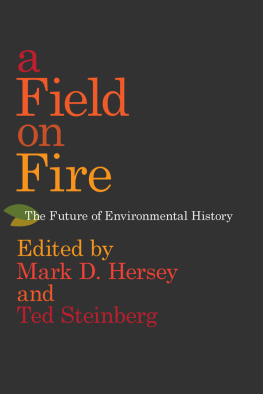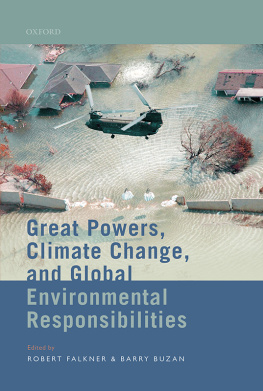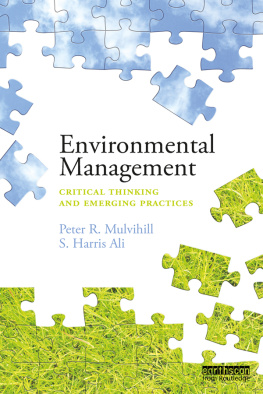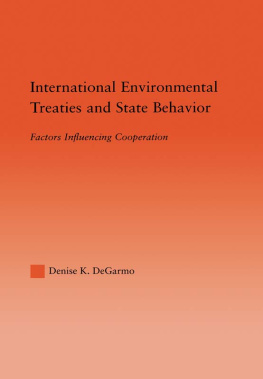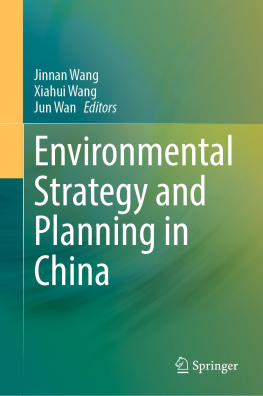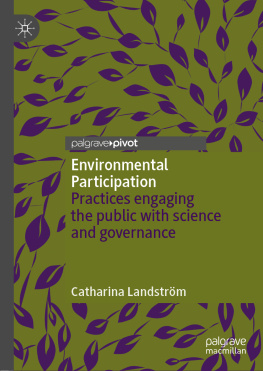Inquiries about reproducing material from this work should be addressed to the University of Alabama Press.
Cataloging-in-Publication data is available from the Library of Congress.
ISBN: 978-0-8173-2001-0
E-ISBN: 978-0-8173-9208-6
Introduction
A Good Set of Walking Shoes
MARK D. HERSEY
In an influential essay penned in 1988, Donald Worster challenged his fellow historians to rethink the boundaries of their discipline. Motivated by the political and social turmoil of the twentieth century, Worsters peers had pushed beyond great man histories, through sophisticated political studies, and probed deeply into the lives of ordinary citizens. Rescuing the long-neglected masses from the enormous condescension of posterity, to borrow E. P. Thompsons famous phrase, historians had made huge strides in exploring the ways in which a multitude of social factors had shaped the everyday lives of people in the past. But historians had not yet pushed far enough. They needed to dig even more deeply, Worster insisted, down to the earth itself.
Historians efforts to recover the lives of ordinary people had entailed a rejection of the arrogant assumption that the only lives and decisions that mattered were those of elites, but they had nevertheless perpetuated a hubris of a different kind. Charles Darwin, Alfred Russel Wallace, and others, after all, had highlighted the profound connection people shared with the natural world. The far-reaching ramifications of their insights had revolutionized much of modern society, including a sizable number of academic disciplines, but the implications of evolutionbiology as historyhad yet to resonate among historians. Consequently, historians had neglected one of humanitys central stories: the domination of nature by Homo sapiens, an adaptable and immensely influential species with a predilection for pushing ecological boundaries.
The significance of this story was self-evident, though historians appeared largely indifferent to it, having offered but few studies that might help clarify the forces undergirding the most environmentally destructive century in history. Nor had they paid much attention to the interaction between people and nature over time more generally, the work of some important predecessors to the practice of a self-conscious environmental history notwithstanding. Squirreled away in archives and offices, historians had instead written histories that abstracted people from the rest of nature. Inadvertently or not, historians had collectively bolstered a belief that humans were godlike, inhabiting a planet that had little influence on their affairs. Environmental historians, Worster noted, realize that we can no longer afford to be so nave.
Indeed, it was past time for historians to take the natural world seriously as an agent and presence in human history, and to begin crafting narratives
Worsters call for a deeply material history that situated human societies in their natural contexts came as the field of environmental history was beginning to mature. Still relatively newWorsters essay appeared in a volume intended to introduce readers to the new and rapidly growing field of environmental historythe field already had a scholarly organization (the American Society for Environmental History, organized twelve years earlier) and prize-winning books (including Worsters Bancroft-winning Dust Bowl and William Cronons Changes in the Land). Nevertheless, questions about the field lingered. Would it be a passing fad, akin perhaps to cliometrics? How should its practitioners approach their studies? Where should the field draw its boundaries? And, above all, what on earth did it mean to write environmental history?
The ensuing years have since answered the first question definitively. Over the past few decades, as Paul Sutter pointed out in 2013, environmental history has been one of the fastest-growing approaches to the study of the past within the larger profession. It has nudged and elbowed its way into the main currents of several historiographies and is making steady progress in others. Academic presses have launched book series with environmental history emphases, history departments have built research clusters in the field, its leading journals have steadily gained prestige, and membership in its professional organizations has grown exponentially.
The answers to the questions about its scope and purpose, however, have proven considerably less conclusive. Debates about the best way to approach the field and the kinds of boundaries (if any) that should be imposed upon it remain far from settled, a fact that has caused some consternation for the field and no small degree of navel-gazing in the years since the fields founders first endeavored to establish an agenda for its practitioners.
Unsurprisingly for a maturing field seeking theoretical coherence in an era in which poststructural thought flourished, Worsters materialist vision proved contested. Disagreements within the emergent field percolated to the surface, most prominently in a roundtable published in the Journal of American History (JAH) for which Worster provided the central essay. Calling
This left environmental historians with the principal charge of figuring out which directions the arrows of causality pointed in a given case or, for that matter, writ large. For his part, Worster thought environmental historians would find the second level the most productive to explore. Redefining an old Marxian term, he encouraged the fields practitioners to focus on modes of production, which, when boiled down in Worsters understanding, centered on how people had gotten food into their bellies over time. Historians would find this second level particularly fruitful, Worster believed, because it would allow them to assess who has gained and who has lost power as modes of production have changed. His own work offered compelling models in this vein: Dust Bowl (1979) and Rivers of Empire (1985), especially, had highlighted the degree to which the capitalist drive to wring money from the earth had exacerbated inequalities of wealth and power even as it wrought profound ecological transformations; the exploitation of people and ecosystems were of a piece. It was through modes of production that the other-than-human world converged most obviously with the familiar economic and social terrain of historians.
Predictably, not all of the respondents concurred with Worsters proposed framework, and in taking issue with his vision for the field, they laid the foundation for the central debates that would shape it for the next decade and beyond. Richard White and William Cronon, especially, worried that Worster was too material in his focus and that his model left little room for much of the work being done by environmental historians. While their own studies had proven deeply material and explored issues of power in much the same way as Worster, Cronon and White nonetheless saw an emphasis on modes of production as a misguided one, prone to tendentious (perhaps even tautological) argumentation. Moreover, they contended that Worsters materialist vision tended toward a nave faith in an outmoded version of ecology, one that had given way to a version in which disturbance, instability, and change was the norm rather than stasisa version that made assessing human interventions problematic.

